We see hooves of all makes and models. Some have tall heels, some have short heels, some have long toes, some have short toes. Do these all reflect trim? Are their bones just that different in shapes and sizes?
Since domesticating horses we have to balance their growth of hoof with their wear of hoof. The less we let them wear it, the more we step in to “help” them. No doubt some of you have seen trims (then left barefoot or shod, but we’re talking about the hoof treatment by the person cutting it back, prior to any other steps taken on the hoof) that made you cringe. More often than not, we see a hoof that looks pleasing to “us” and as long as the horse is sound, we consider it a job well done.
Let’s look at BONES.
And to remove my subject matter from the flame wars of trimming methods, let’s go to a really tame, safe corollary: peoples’ weight. Because if one thing’s for certain, nothing is more exciting than telling someone they could stand to lose a few pounds. It’s right up there with telling someone their trim is awful. What’s funny is, slight deviations in trimming style and slight deviations in “ideal weight” don’t faze us. It’s the larger deviations that bother us. It’s the obese or the bony that catch our eye, likewise, it’s the really scary trims that attract negative attention.
I used to weigh more than I did now. Happens to all of us. I gained weight and luckily lost it. During that process I met people who sympathized with my weight gain. Comments ranged from, “Every decade of life, a woman’s body changes” to “You just like eating ice cream, don’t you?” Not too surprisingly, the protagonists were overweight like I was and the antagonists were fitter people than I was. Which brings me to the “I’m not fat, I’m just big boned” argument.
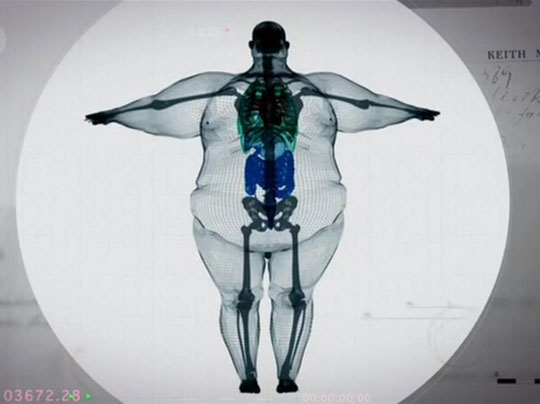
While we may look greatly different on the outside, frankly, our skeletons are not that different. Yes, I will have a different skeleton than a person who is 6’10” but if you lined me up in an airport scanner with 20 other people that were 5’9”, TSA wouldn’t be able to pick my bones out of the line-up. Except that I would probably be the one doing this:
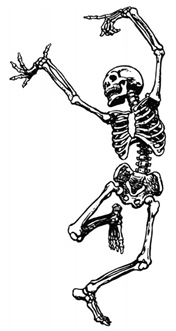
What about our horse’s coffin bones? If I take a Thoroughbred hoof and an Arabian Hoof and a Standardbed hoof and a Warmblood hoof; how different are their coffin bones?
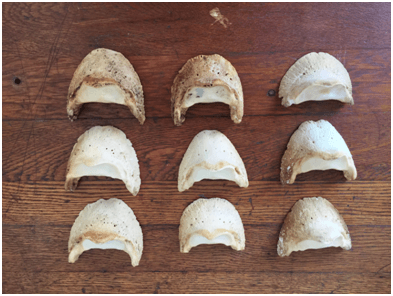
Photo courtesy of Daisy Bicking. Can you tell which one is a Quarter Horse?
Yes, they are slightly different, but every horse is slightly different. Their ages, what they are fed, what ground they live on, their level of hoof care over their life can dictate variations to the coffin bone. But at first glance: they ain’t that different. I can’t look at these and spot which horse weighed 700lbs and which weight 1,700lbs. Just so you know, that little guy in the front row with the least amount of palmar process (sticky-outy-bits) was a baby.
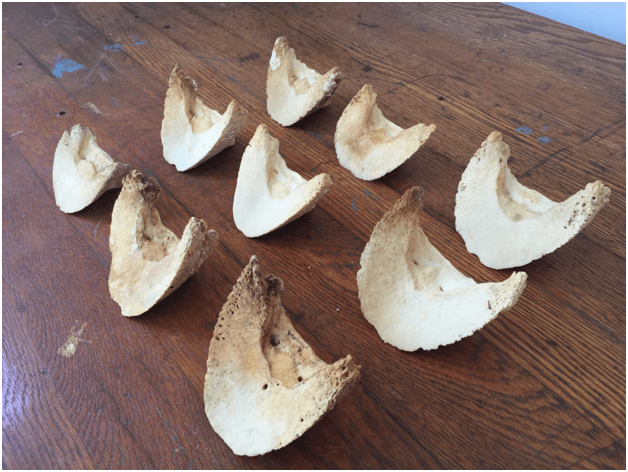
Photo courtesy of Daisy Bicking.
But if the variety of horse, their intended function, their height and weight can be grossly different, how come their coffin bones aren’t grossly different?
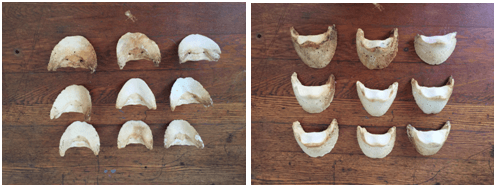
Photo courtesy of Daisy Bicking.
There are two points I am trying to make:
1) No two coffin bones are the SAME.
2) These coffin bones aren’t grossly DIFFERENT.
To draw out my obvious conclusion, no two trims will be the “same” and should suit every horse. It is custom to that horse and how IT moves, on the terrain IT covers and with regard to the hoof IT grows from the diet and exercise IT is on. Conversely, there isn’t room for the scary trims to exist by reason of, “His bone structure is just different”.

Is there room in logic for this variety of hoof trims?
How about for this variety of solar prints?

And there are exceptions. A horse that is growing out a new hoof capsule after an acute case of laminitis, a chronic case of laminitis, a hoof injury, a metabolic crash or a horse that has a modified coffin bone due to a hoof pathology would have hooves that looked different than the norm. But I get my panties in a twist when I see a horse (that has no past or present health issues) not moving freely and soundly who has scary-bad feet.
Each owner should understand the basics of hoof anatomy and have a heart-to-heart discussion with their trimmer or farrier if they think they are too far off the path. Especially if your horse is not sound. In my next blog, we’re going to look at suspension and how the trim can adversely affect the suspending structures of the lower limb.
Holly Jonsson

Director of Sales
Through a lifetime of “horse crazy” and the fortunate experience of riding nearly every shape and size of horse, I got to see a wide array of hoof shapes and sizes. No Hoof, No Horse is very true to me. I want to ensure that horses on every continent have a variety of footwear to pick from, to ensure the best match is found. I want your partner to be happy from the ground up!





